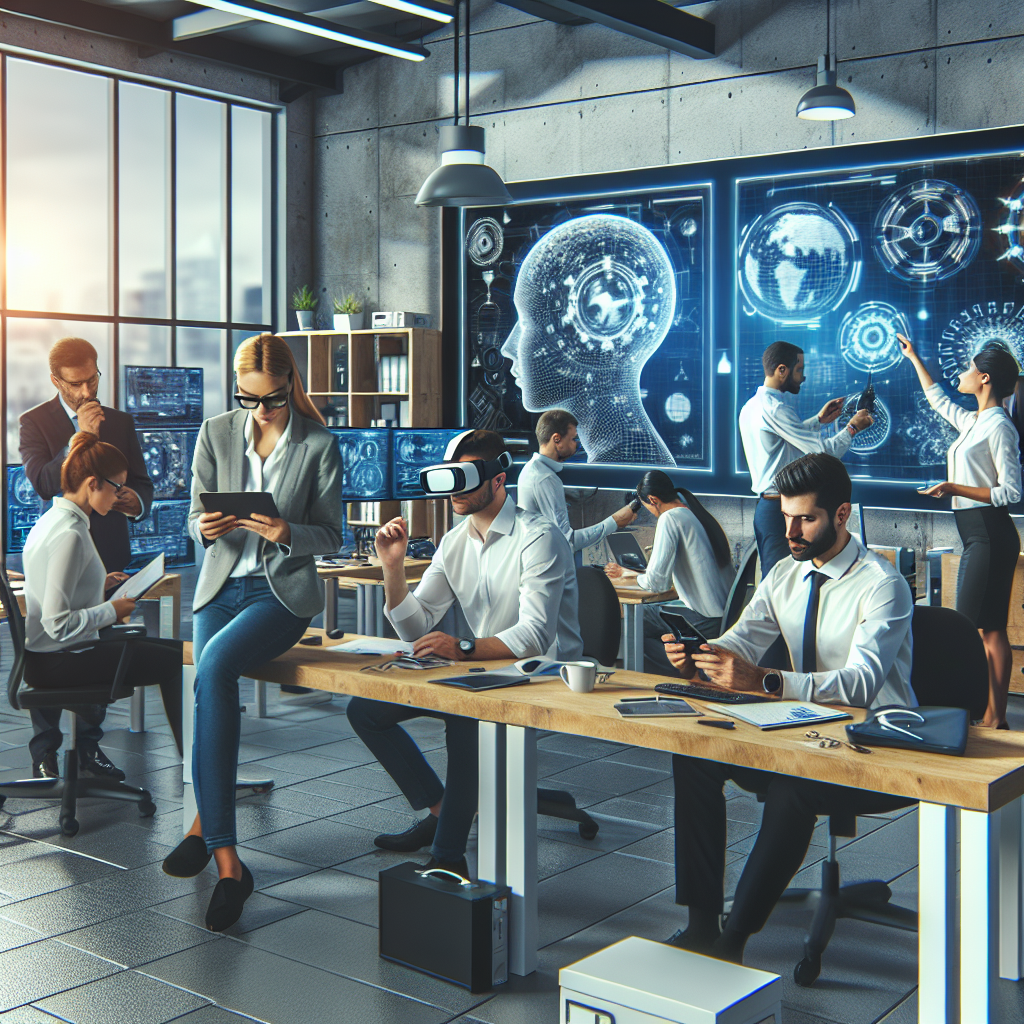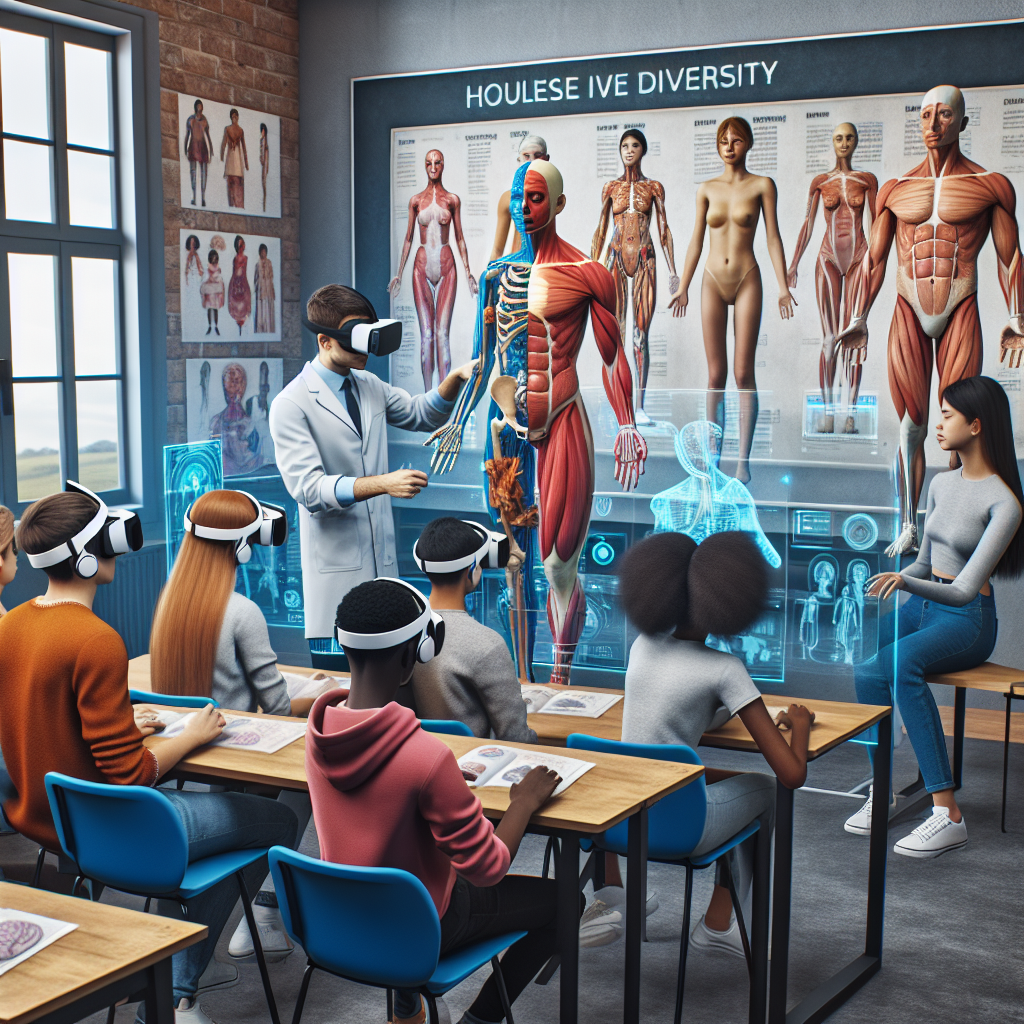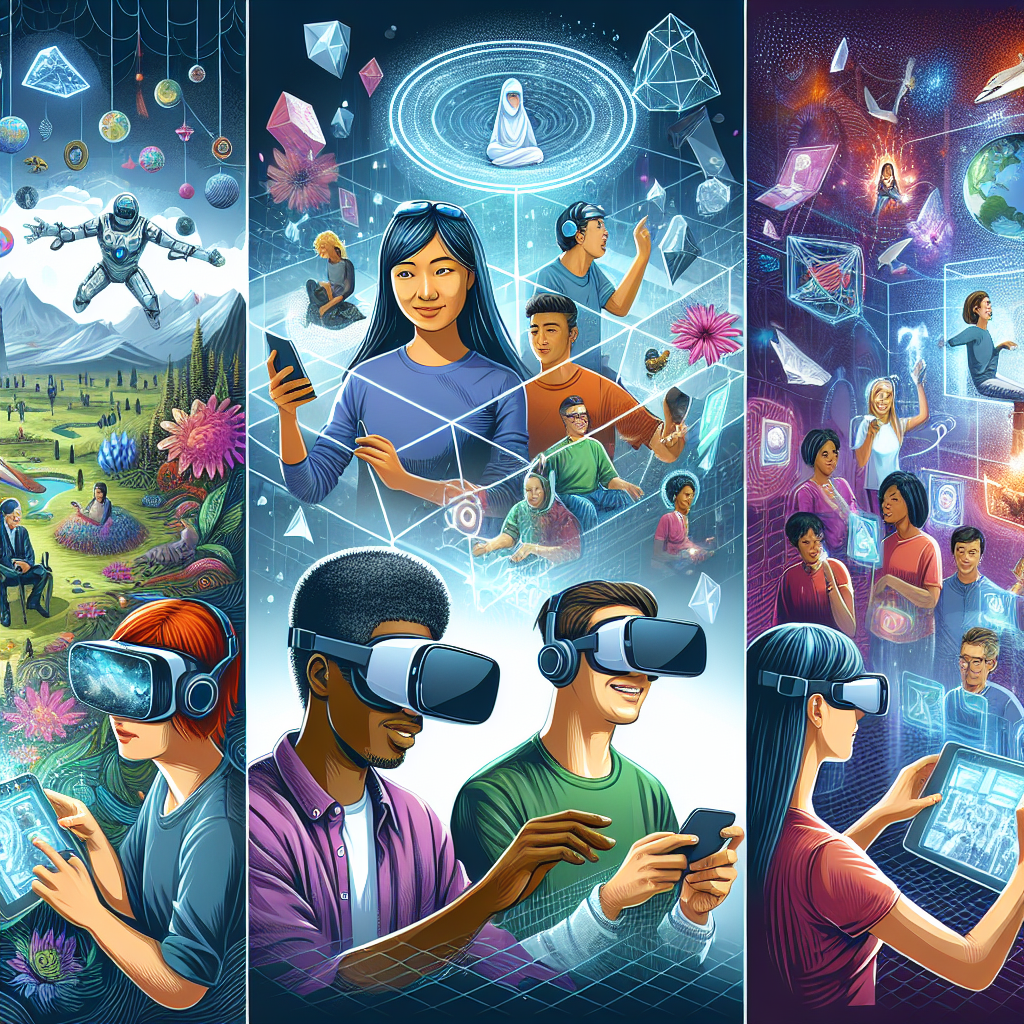Revolutionizing Experiences with Virtual Reality Development: Discover How Virtual Reality Technologies Work and the Various Types Available

What is VR Development? Unveiling the Future of Interactive Experiences

If youve ever put on a VR headset and felt like you were stepping into another world, you’ve experienced the magic of what is VR development? ⭐. At its core, VR development is the process of creating immersive digital environments that simulate a 3D world, allowing users to interact with that space in real-time. This technology isnt just for gamers; it’s revolutionizing various sectors—from education to healthcare, and even marketing! Imagine attending a virtual classroom lecture alongside peers from around the globe or trying on outfits virtually before buying them online. ⭐⭐
| Application | Industry | Example | Benefits |
| Training Simulations | Healthcare | Surgical training in VR | Hands-on experience without risks |
| Virtual Tours | Real Estate | 360-degree home tours | Broader audience reach |
| Gaming | Entertainment | Immersive gameplay experiences | Enhanced engagement |
| Education | Academics | Virtual history lessons | Interactive learning environments |
| Product Design | Engineering | 3D modeling in VR | Immediate visualization |
| Remote Collaboration | Business | Virtual team meetings | Improved communication |
| Fitness | Health | VR fitness classes | Motivational workouts |
| Marketing | Advertising | Interactive product showcases | Enhanced customer engagement |
| Architecture | Construction | Virtual building walkthroughs | Prototyping before actual build |
| Therapy | Mental Health | Exposure therapy in a controlled space | Effective treatment methods |
Statistics show that the global VR market is expected to reach over $57 billion by 2027, with a compound annual growth rate (CAGR) of around 44% from 2020 to 2027. ⭐ This growth highlights the increasing demand for immersive technologies.
Wondering how does virtual reality technology work? It combines hardware (like VR headsets and motion sensors) and software (like imaging techniques and 3D modeling) to create a fully immersive experience. This synergy enables users to perceive their environment as if it were real, allowing for interactive experiences through motion and response. ⭐
As for who develops virtual reality? It’s a collaborative effort between developers, designers, and software engineers who use specialized tools and programming languages such as Unity, Unreal Engine, and C#. ⭐ Each platform has unique capabilities for programming virtual reality experiences, catering to different needs—be it gaming, educational simulations, or business applications.
But what can you expect when considering how much does it cost to create virtual reality solutions? It varies widely based on complexity. A simple VR experience might start at €2,000, while an in-depth, interactive simulation could reach or exceed €10,000, depending on design specifications and requirements. ⭐
Imagine a potential client, Anna, a real estate agent. She wanted to stand out in a competitive market. By collaborating with our team for VR development at Artivale.com, Anna transformed her listings with virtual tours. Now, prospective buyers can walk through homes without leaving theirs! Not only did this innovate her marketing strategy, but it also significantly boosted her sales. ⭐
If youre inspired by these examples and want to be part of this exciting journey, don’t hesitate to reach out to us! Our professional specialists bring over 20 years of experience to the table. We offer all services in one place, from software development to ongoing support, ensuring you never juggle multiple contacts. Whether you need a complete VR setup or are just exploring options, Artivale.com has you covered.
Ready to bring your projects into the VR world? Contact Alexandra at [email protected] for a consultation. Lets revolutionize your interactions with technology! ⭐
Frequently Asked Questions about VR Development
- What is VR development? - Its the creation of immersive digital experiences that allow interaction in a 3D space.
- How does virtual reality technology work? - It combines hardware and software to create an immersive environment.
- What types of virtual reality are there? - There are fully immersive, augmented, and mixed reality experiences.
- What is the difference between AR and VR? - AR enhances reality, while VR creates a completely new environment.
- Who develops virtual reality? - Teams of developers, designers, and engineers specialize in creating VR experiences.
- What do they use to program virtual reality? - Common tools include Unity, Unreal Engine, and various 3D modeling software.
- How much does it cost to create virtual reality? - Prices range from €2,000 to €10,000 and can vary based on project specifications.
- Is VR only for gaming? - No, VR has applications in education, real estate, therapy, and more.
- Can VR improve training? - Absolutely! VR offers risk-free training that enhances learning outcomes.
- How can businesses benefit from VR? - Businesses can increase engagement, improve training, and create memorable marketing experiences.
How Does Virtual Reality Technology Work? Exploring the Mechanics Behind Immersion

Have you ever wondered what makes the magic of how does virtual reality technology work? unfold? ⭐ Let’s dive into the mechanics that create those stunning, immersive experiences that transport you to a whole new world! Virtual Reality (VR) combines advanced hardware and innovative software, all working in sync to create an environment that feels strikingly real. Whether youre an avid gamer or someone curious about this cutting-edge technology, understanding its mechanisms can be both fascinating and enlightening.
The Role of Hardware in VR
The foundation of any virtual reality experience lies in its hardware. Here’s what makes it tick:
- VR Headsets: The most recognizable part of VR, headsets like the Oculus Rift or HTC Vive, provide the visual experience. They feature high-resolution displays and wide fields of view to immerse users effectively.
- Motion Controllers: These gadgets allow users to interact with the virtual environment. They track movement and provide tactile feedback, enabling actions like picking up virtual objects or navigating through scenes.
- Tracking Sensors: Placed around the area where the user experiences VR, these sensors detect the position of the headset and controllers to ensure seamless integration of movements in real time.
- Audio Equipment: Immersive audio in VR is just as crucial as visuals. Surround sound systems or headphones enhance the experience, making users feel rooted in their virtual surroundings.
With this gear, VR creates a fully engaging experience where every element contributes to the overall immersion. But what about the software? ⭐
The Software Magic Behind VR
Software transforms the capabilities of hardware into a cohesive immersive experience. Here’s how:
- 3D Modeling Software: Tools such as Blender or Maya are used to create and animate the 3D assets within the virtual environment. This gives life to everything, from characters to landscapes!
- Game Engines: Platforms like Unity or Unreal Engine enable developers to compile all elements and add interactivity. They handle physics, rendering, and user input to create a responsive experience.
- Simulation Software: For industries like healthcare and training, specialized simulation software ensures that users can practice skills in a risk-free environment.
- Networking Capabilities: Many VR experiences involve multi-player features. Relevant software ensures smooth communication between users, whether its for gaming, collaboration, or training purposes.
Combining these elements allows developers to create highly detailed worlds where users can engage, explore, and even interact with other participants. ⭐
Understanding Immersion and Interaction
At the heart of VR is the concept of immersion. Immersive experiences trick your brain into thinking you’re somewhere else. How is this achieved? Through three key aspects:
- Field of View (FOV): A wider field of view can help users feel surrounded by the virtual space, enhancing immersion.
- Depth Perception: Stereoscopic displays help create a sense of depth, making objects appear closer or farther away, much like in real life.
- Realistic Interactions: The ability to move and manipulate objects in the virtual space fosters a connection, making users feel as if they truly belong to that world.
Imagine a training scenario where a doctor can practice a complex surgical procedure using VR. This doctor can effectively grasp the procedures intricacies without risking anyones health. Clinical studies indicate that VR training can significantly enhance surgical techniques and confidence among medical professionals—all thanks to the combination of immersive technology and real-time feedback. ⭐
Common Applications of VR Technology
As you can see, the mechanics behind VR allow for a multitude of applications:
- Gaming: The entertainment industry is one of the most visible users. VR gaming offers users the chance to feel as if they’re really inside the game.
- Real Estate: Virtual tours allow potential buyers to experience properties from the comfort of their homes.
- Education: Virtual classrooms enable learners to explore new concepts within interactive digital environments, increasing engagement.
- Healthcare: VR therapy offers innovative methods to treat phobias and PTSD, among other conditions.
- Training and Simulation: Industries utilize VR for training employees on complex machinery or emergency response procedures.
In fact, studies have shown that training in VR can increase knowledge retention by up to 75% compared to traditional methods! ⭐
Isnt that incredible? If you’re ready to explore the exciting realm of virtual reality, Artivale.com is here to help. We know how to navigate this ever-evolving landscape and can tailor a VR solution to fit your needs. Whether youre a startup or an established business, we provide comprehensive services from development to support. Don’t hesitate to contact Alexandra at [email protected] for a consultation!
Frequently Asked Questions about VR Technology
- What does VR technology do? - It creates immersive digital environments that users can interact with.
- What devices are needed for VR? - VR headsets, controllers, sensors, and audio equipment are essential.
- How do you create a VR experience? - Use 3D modeling and game engines to design and program interactive environments.
- What are the main components of VR? - Hardware (headsets, sensors) and software (game engines, modeling tools).
- Can VR be used for training? - Yes! It’s particularly effective for hands-on training in various industries.
- Is VR only for gaming? - No, VR has applications across many sectors, including education and healthcare.
- How does VR affect learning? - It enhances engagement and improves knowledge retention through immersive experiences.
- How realistic is the interaction in VR? - Very realistic, allowing users to manipulate and interact with 3D objects.
- Can VR be used for therapy? - Absolutely! VR therapy is an innovative tool for treating various psychological conditions.
- Is there a risk of VR motion sickness? - Some users may experience discomfort, but developers continually improve technology to minimize this.
What Types of Virtual Reality Are There? Discovering Different VR Experiences and Their Applications

Virtual Reality (VR) isnt just one thing; its a spectrum of experiences that can cater to various needs and industries. By understanding what types of virtual reality are there?, you can see just how diverse this technology is and how it can be applied in everyday life. ⭐ Whether youre a gamer, a business professional, or an educator, theres a VR solution tailored for you. Lets explore the different types of VR and their applications!
1. Fully Immersive Virtual Reality
Fully immersive VR provides the highest level of engagement and realism by enveloping the user in a 3D environment. Using high-quality headsets, motion sensors, and audio devices, users can interact seamlessly with their surroundings. ⭐ It tricks your brain into thinking youre actually there!
-
Applications:
- Gaming: Experience intense, heart-pounding gameplay where every move feels real.
- Training: For instance, flight simulators allow pilots to practice maneuvers without risking safety.
2. Non-Immersive Virtual Reality
In contrast, non-immersive VR uses a computer screen or monitor instead of a headset, allowing the user to interact with the 3D environment but without the complete immersion. This type is often used in training simulations or educational settings. ⭐️
-
Applications:
- Education: Virtual labs where students engage in experiments without physical materials.
- Real Estate: Virtual walkthroughs of properties on a monitor, allowing potential buyers to view homes from afar.
3. Augmented Reality (AR)
AR overlays digital information onto the real world, blending the virtual and physical. While technically not pure VR, AR offers immersive experiences by enhancing the real-world environment with digital content. Think Pokémon Go! ⭐
-
Applications:
- Marketing: Brands use AR to create interactive advertisements that engage customers.
- Education: Applications like Google Expeditions allow students to experience history by overlaying visual models in their current environment.
4. Mixed Reality (MR)
Mixed reality combines both VR and AR, allowing real and virtual elements to interact in real-time. Users can manipulate physical and digital objects, creating a more interactive experience. ⭐
- Applications:
5. Desktop Virtual Reality
This type allows users to interact with virtual environments using traditional computer setups but often lacks the immersive experience of headsets. ⭐ Users still benefit from a three-dimensional space but retain a degree of separation from the experience.
-
Applications:
- Research: Scientists use it to visualize data sets and complex models interactively.
- Games: It can enhance gameplay experiences for systems that do not yet support full VR.
6. Social Virtual Reality
Social VR lets users interact with each other in a virtual space—even if they’re miles apart. Players can attend virtual concerts, meet friends in digital cafes, or collaborate on projects in various environments. ⭐
-
Applications:
- Entertainment: Hosting music events or movie nights in a shared virtual space.
- Collaboration: Companies can use platforms like VRChat for remote team-building exercises and meetings.
Statistics and Market Insights
Did you know that over 40% of businesses are planning to adopt VR technology for training purposes? ⭐ An astounding statistic that showcases how beneficial immersive learning can be! The market for VR is projected to reach $57 billion by 2027, underscoring its viability across sectors.
Real-World Example: VR in Education
Consider Sarah, a high school teacher who integrated VR into her curriculum. By utilizing fully immersive experiences, her students could explore ancient Rome as if they were there! This not only increased engagement but also improved knowledge retention, as studies suggest immersive learning can increase retention rates by as much as 75%. ⭐ Sarahs classes became a hit, sparking interest and curiosity among her students like never before.
If you’re amazed by these possibilities and want to implement VR technology into your projects or business, reach out to us! At Artivale.com, we take pride in offering comprehensive VR solutions tailored to meet your specific needs. With over 20 years of experience, our professional specialists guarantee quality service and support. Contact Alexandra at [email protected] to start your journey into the world of virtual reality today!
Frequently Asked Questions about Types of Virtual Reality
- What are the main types of virtual reality? - The main types include fully immersive, non-immersive, augmented reality, mixed reality, and social VR.
- How is fully immersive VR different from non-immersive? - Fully immersive VR uses specialized headsets for total engagement, while non-immersive VR relies on screens.
- What role does augmented reality play in VR? - AR enhances the real world by overlaying digital information, providing a complementary experience to VR.
- Can VR be used in education? - Absolutely! VR provides immersive learning experiences that improve student engagement and retention.
- What is mixed reality? - Mixed reality combines real and virtual elements, allowing them to interact in real-time.
- How can businesses leverage social VR? - Businesses can host meetings, training sessions, or team-building exercises in virtual environments.
- What are some challenges of adopting VR? - Potential challenges include costs, technical know-how, and ensuring a smooth user experience.
- Is VR effective for training purposes? - Yes! VR makes it possible to practice without risks, making training much more impactful.
- How do I get started with VR? - Start by defining your needs and exploring the right VR technology and services that suit your goals.
- What future trends can we expect in VR technology? - Enhanced realism, wider applications across industries, and accessibility improvements will shape the future of VR.
Submit your details in the form and our team will personally get in touch with you within the next business day to discuss your needs
